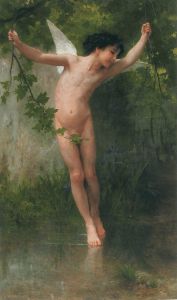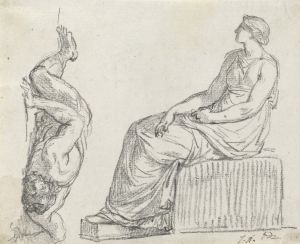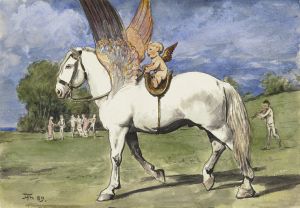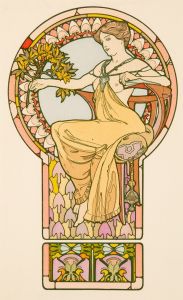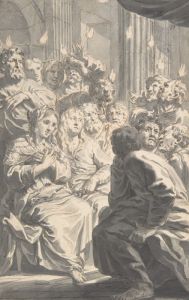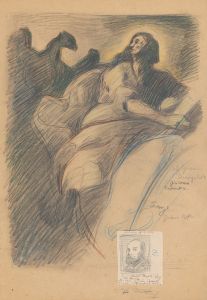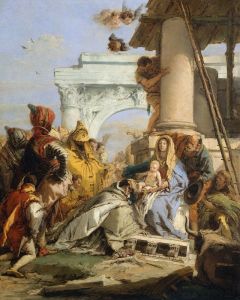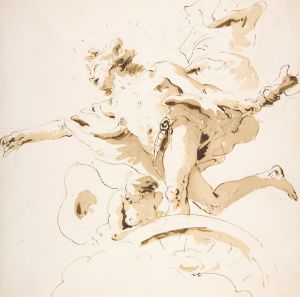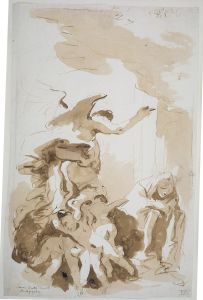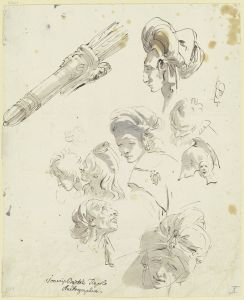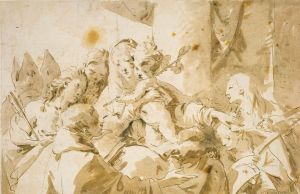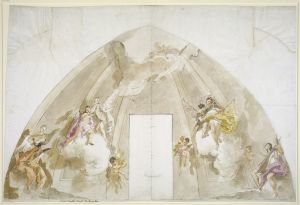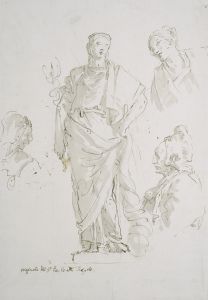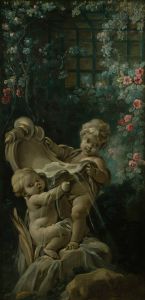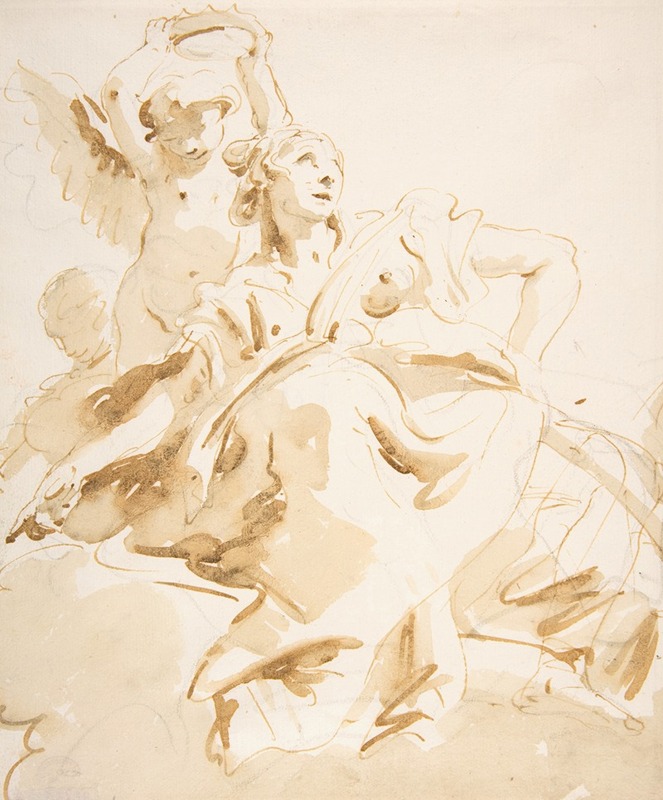
Winged Putto Crowning a Seated Woman Who Looks Upward
A hand-painted replica of Giovanni Battista Tiepolo’s masterpiece Winged Putto Crowning a Seated Woman Who Looks Upward, meticulously crafted by professional artists to capture the true essence of the original. Each piece is created with museum-quality canvas and rare mineral pigments, carefully painted by experienced artists with delicate brushstrokes and rich, layered colors to perfectly recreate the texture of the original artwork. Unlike machine-printed reproductions, this hand-painted version brings the painting to life, infused with the artist’s emotions and skill in every stroke. Whether for personal collection or home decoration, it instantly elevates the artistic atmosphere of any space.
Giovanni Battista Tiepolo, an Italian painter and printmaker, is renowned for his grandiose and imaginative frescoes and paintings that epitomize the Rococo style. One of his works, "Winged Putto Crowning a Seated Woman Who Looks Upward," exemplifies his mastery in capturing ethereal and allegorical subjects with a sense of movement and drama.
Tiepolo was born in Venice in 1696 and became one of the most prominent painters of the 18th century. His work is characterized by its vibrant color palette, dynamic compositions, and the use of light to create a sense of depth and volume. Tiepolo's art often features mythological and religious themes, rendered with a lightness and elegance that was highly sought after by patrons across Europe.
"Winged Putto Crowning a Seated Woman Who Looks Upward" is a testament to Tiepolo's skill in portraying allegorical figures. The painting depicts a putto, a chubby male child often used in art to represent cherubs or spirits, with wings, placing a crown upon the head of a seated woman. The woman gazes upward, her expression one of serene contemplation or perhaps divine inspiration. The interaction between the putto and the woman suggests themes of honor, divinity, or enlightenment, common motifs in Tiepolo's oeuvre.
The composition is marked by Tiepolo's typical use of soft, flowing lines and a harmonious color scheme. The figures are rendered with a sense of grace and fluidity, their forms illuminated by a gentle, diffused light that enhances the ethereal quality of the scene. Tiepolo's ability to convey texture and movement through his brushwork is evident in the delicate rendering of the putto's wings and the woman's drapery.
Tiepolo's work was heavily influenced by the Venetian tradition, particularly the works of Paolo Veronese and Giovanni Battista Piazzetta. However, he developed a distinctive style that combined the grandeur of the Baroque with the playful elegance of the Rococo. His frescoes and paintings were commissioned by nobility and religious institutions throughout Italy and beyond, including Germany and Spain, where he spent the latter part of his career.
The exact date of creation for "Winged Putto Crowning a Seated Woman Who Looks Upward" is not specified, but it likely falls within the period of Tiepolo's mature work, when he was at the height of his artistic powers. During this time, Tiepolo was known for his large-scale frescoes, such as those in the Würzburg Residence and the Royal Palace of Madrid, which showcased his ability to create expansive, immersive environments filled with light and movement.
Tiepolo's legacy endures through his contributions to the development of European art, particularly in the way he blended traditional religious and mythological subjects with the lighter, more decorative elements of the Rococo. His influence can be seen in the works of later artists who sought to capture the same sense of drama and elegance in their own compositions.
In summary, "Winged Putto Crowning a Seated Woman Who Looks Upward" is a fine example of Giovanni Battista Tiepolo's artistic prowess, reflecting his ability to convey complex allegorical themes with grace and beauty. Through his innovative use of color, light, and composition, Tiepolo created works that continue to captivate audiences with their timeless elegance and expressive power.





